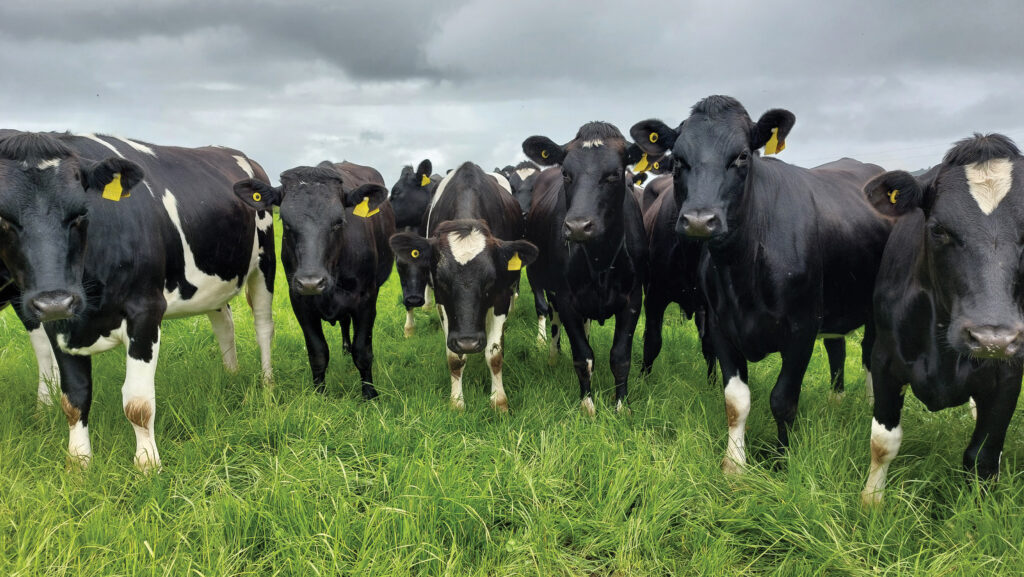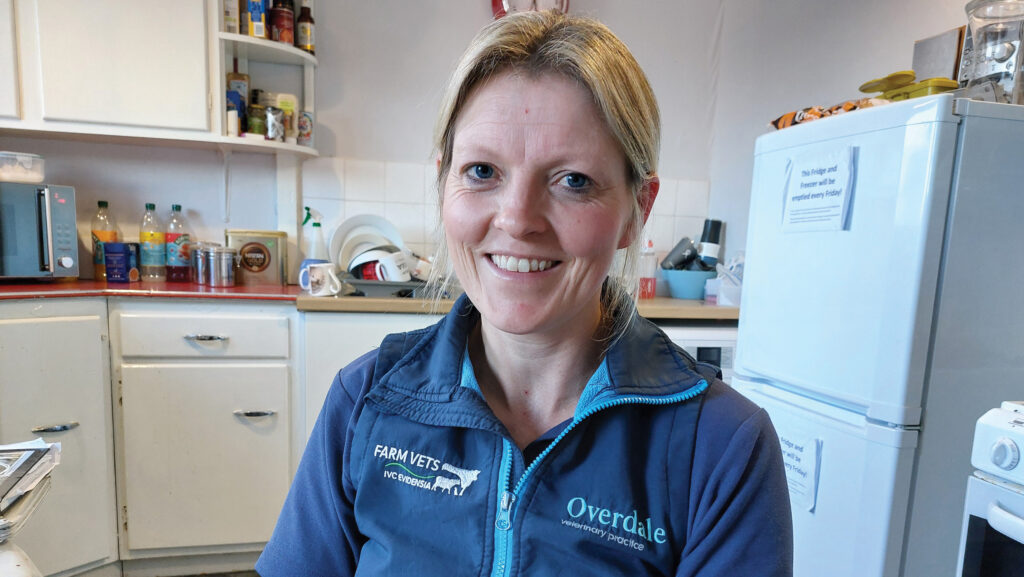Benefits of giving heifers pain relief at calving
 © MAG/Shirley Macmillan
© MAG/Shirley Macmillan Giving all heifers a pain relief injection after calving will help them through the transition process of joining the milking herd and thereby prevent metabolic issues and lameness.
In the absence of separate heifer transition facilities – or the space to run a first-lactation heifer management group – vet Annemarie Fitzgerald, believes this could be the next best thing.
See also: How to help heifers join the milking herd and reduce stress

Vet Annemarie Fitzgerald, Derbyshire Veterinary Services, Buxton © MAG/Shirley Macmillan
As cattle are a prey species, they do not show obvious signs of pain, however, pain management is important for welfare, she says.
A cow’s blood cortisol levels (associated with stress and pain) rise at calving as a normal part of the birthing process.
Continued elevation after calving because of stress – whether from an assisted calving or competition for feed and space – leads to problems.
Reduced risk
“It goes without saying that if we can improve the heifer’s transition period, she is less likely to have issues,” says Annemarie.
“The gold standard is to run a separate heifer group, but it is not practical for all farms if they don’t have space. We suggest calving heifers in pairs, so that they can at least join the main group with a friend.”
There is no direct evidence for routine use of a non-steroidal anti-inflammatory (NSAID) for first calvers, but she points out this approach ties in with lameness research from the University of Nottingham.
Trial work showed that, over 34 months, animals receiving an NSAID at first and subsequent calvings were at a significantly reduced risk of being culled or identified as lame.
“It’s connected to systemic inflammation at calving affecting ligaments on the tail head and in the feet.
“There are also effects on the digital foot pad – if this becomes thin, an animal is more likely to go lame,” she says.
The digital pad (also known as the fat pad, which sits under the pedal bone) is thinnest immediately after calving, and its thickness correlates with body condition score.
Digital cushion damage
“Once a heifer’s digital pad gets damaged, it can be permanent, and this results in chronic claw lesions,” she says.
“Mixing with older, bigger cows increases a heifer’s standing time, which then puts more pressure on the digital cushion, leading to lameness.
“And because she is standing more, there is more risk of burning off the fat pad from stress.”
Pain relief for calving heifers is also important because they are under more social stress, which Annemarie likens to “starting secondary school – quite scary”.
“[Heifers] also have a small pelvis, which hasn’t been stretched, and so experience more pain at their first calving.
“But if they feel better, a heifer continues to eat, is more likely to lie down and be comfortable, and is less likely to experience any of the common transition problems, such as subclinical and clinical ketosis, or a displaced abomasum.”
Farm risk factors
Annemarie suggests dairy farmers discuss options with their vet, identifying farm-specific risk factors to help decide where blanket use of NSAIDs for freshly calved heifers can be used.
To work out the farm’s own cost-benefit of using routine pain relief across heifers, she says that dairy farmers can buy NSAIDs from their vet and administer the injection themselves.
This cost should then be compared with potential production losses and treatments for heifers that do not transition well.
These range from litres of milk and the cost of treating a lame heifer, to getting back in-calf and, ultimately, whether she completes her first lactation and calves again for a second time to repay her rearing costs.
